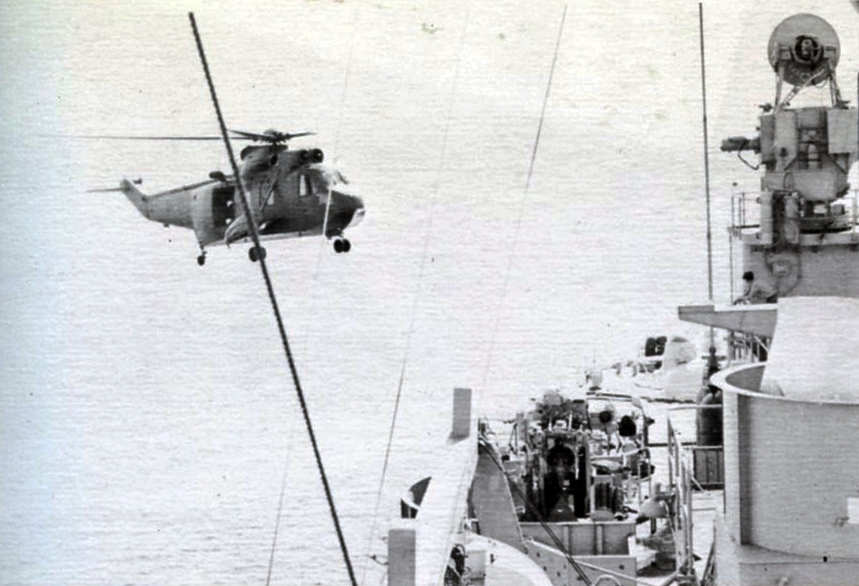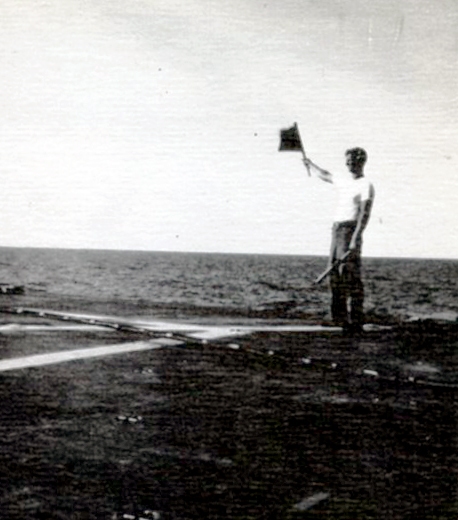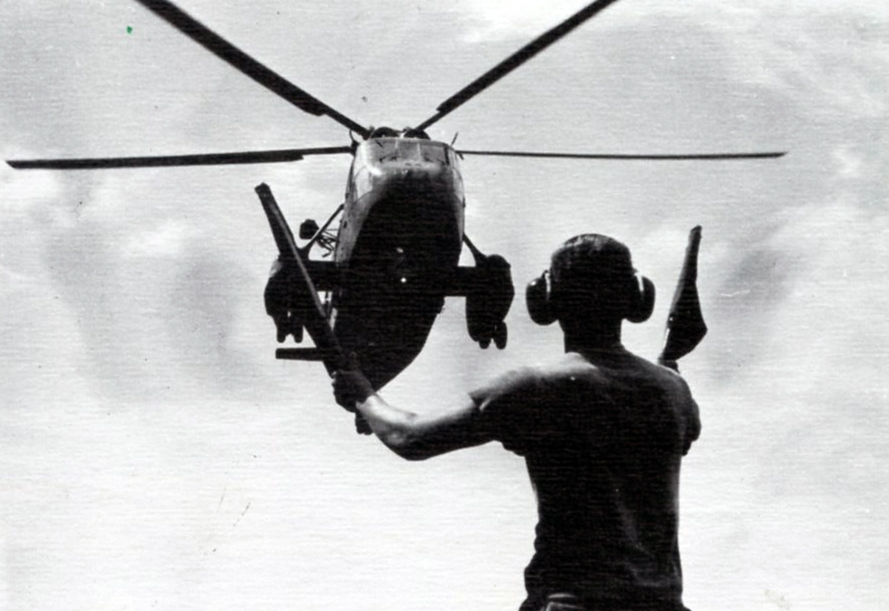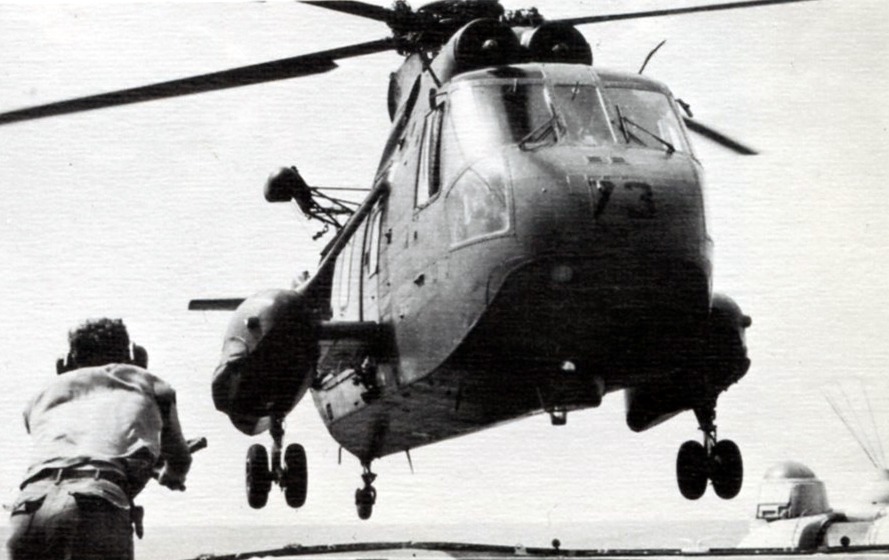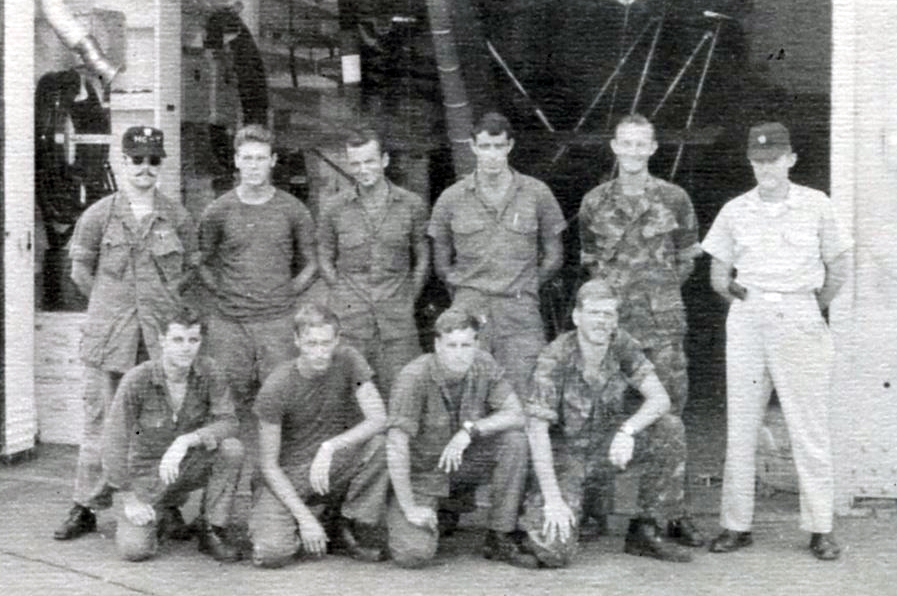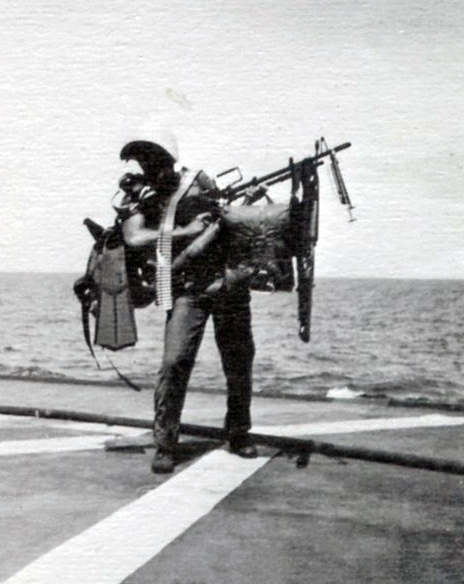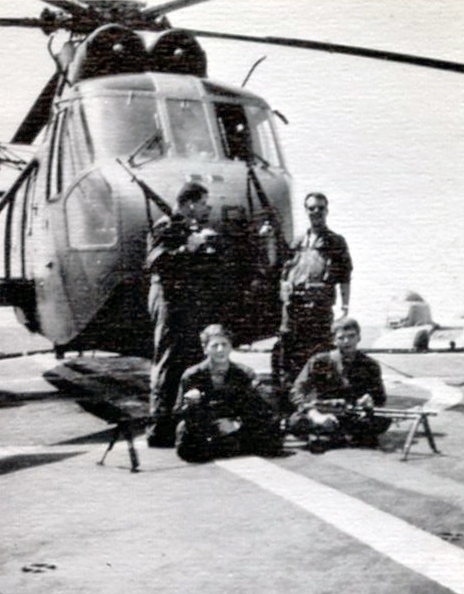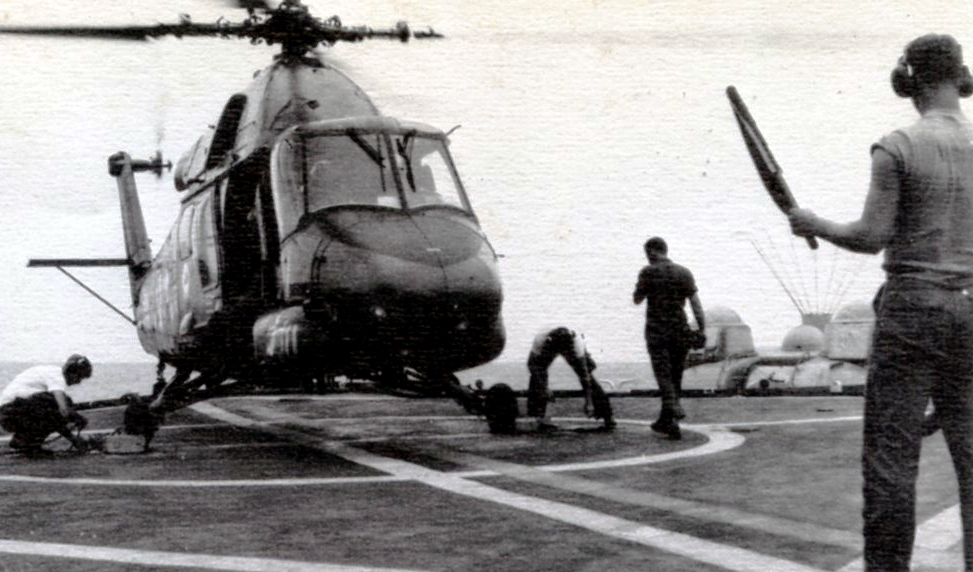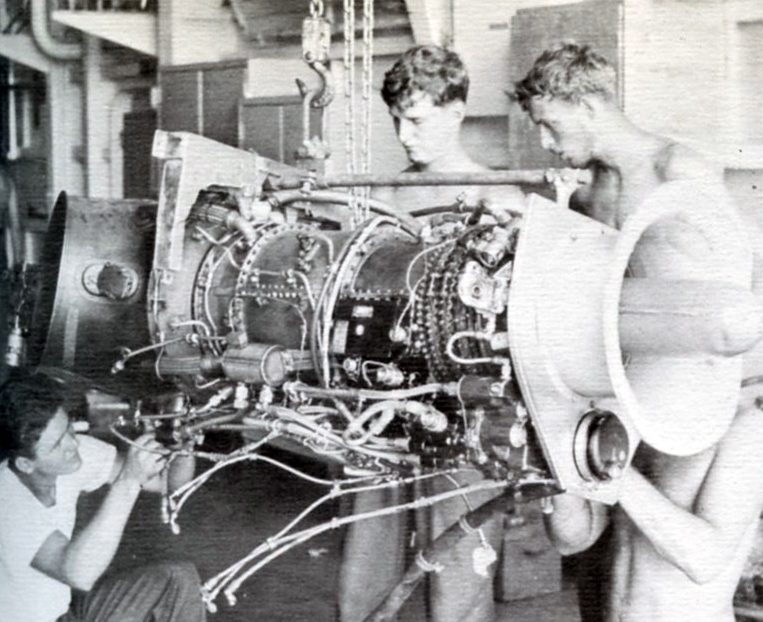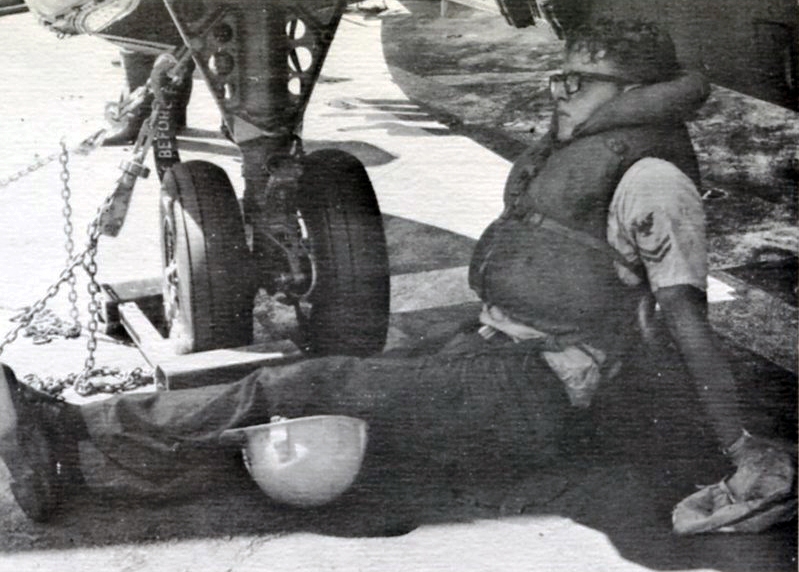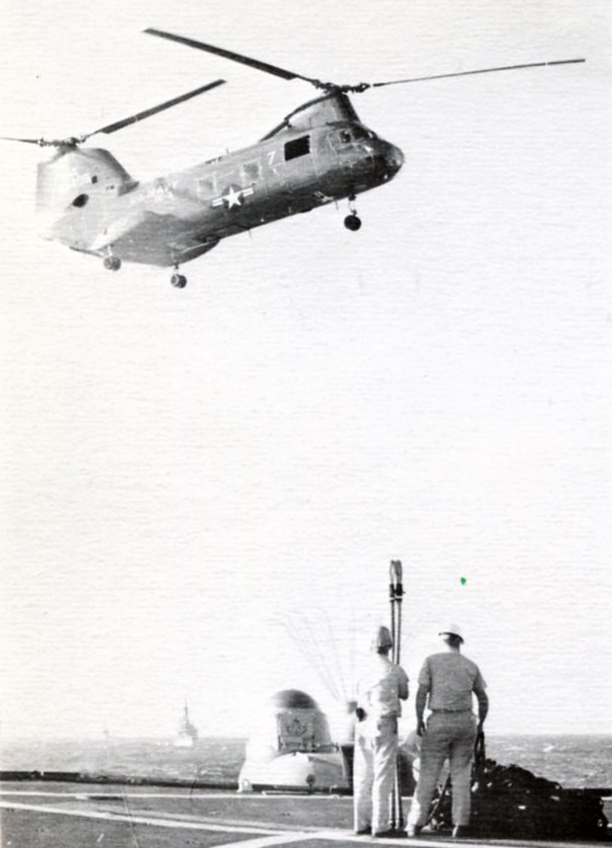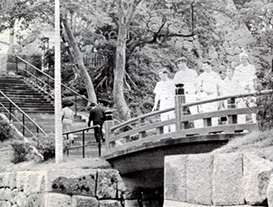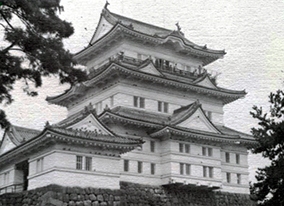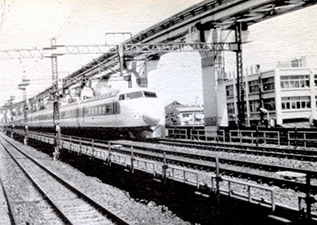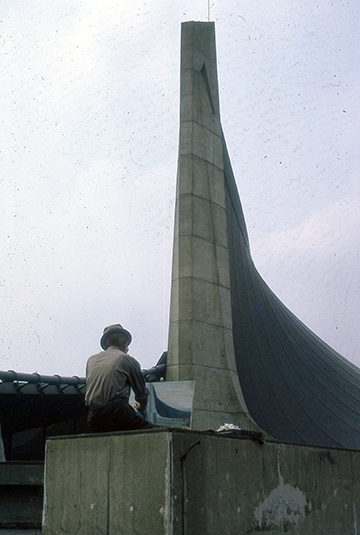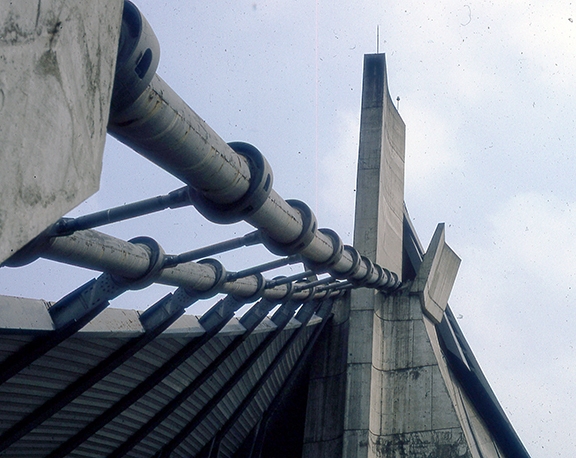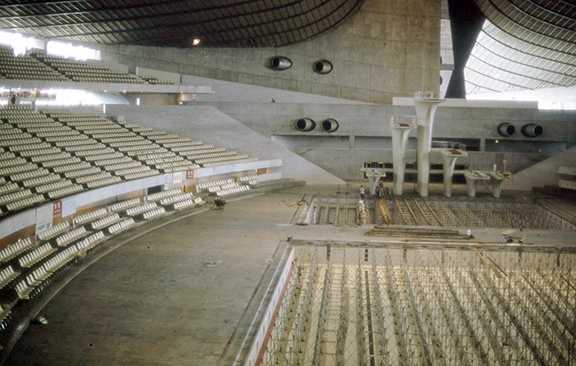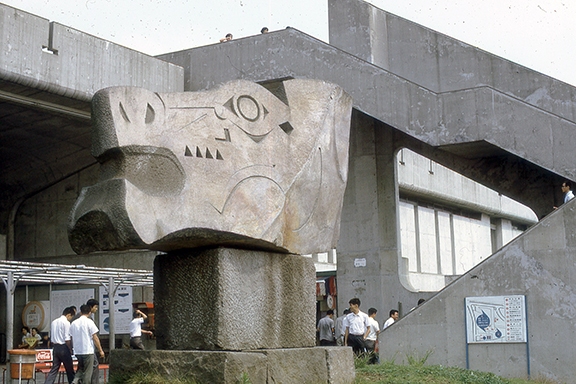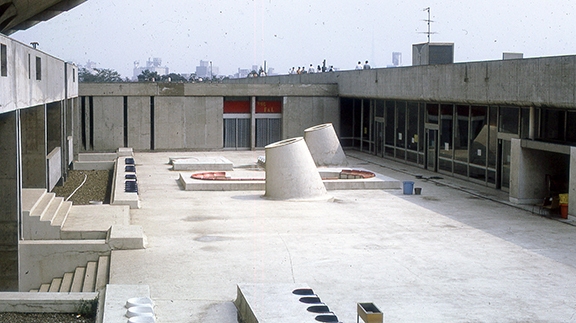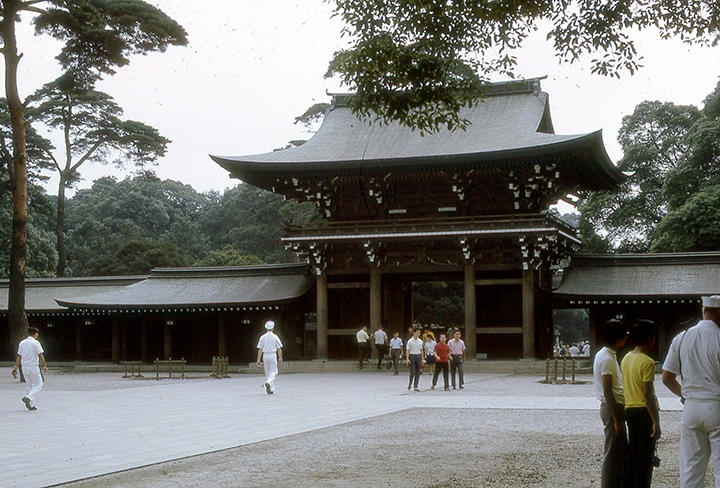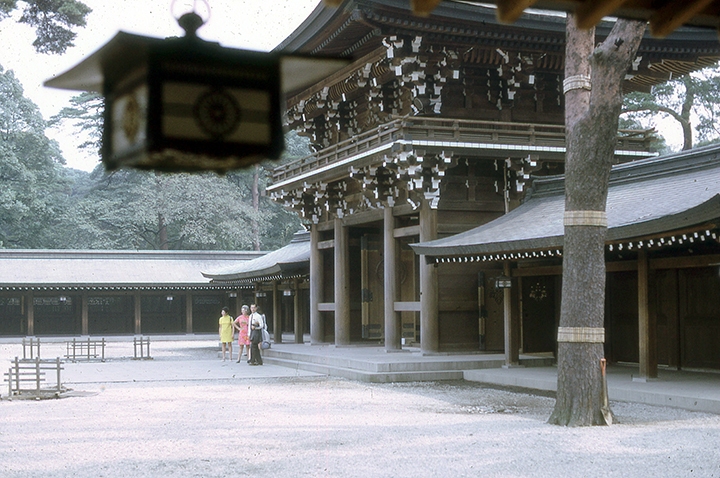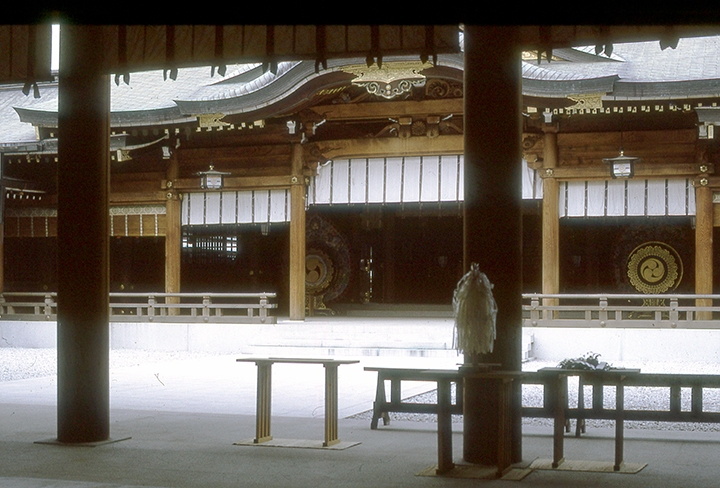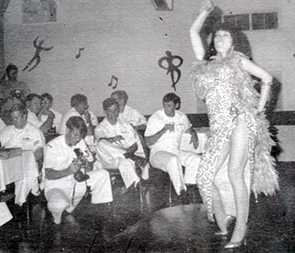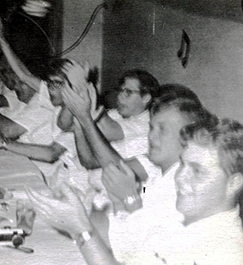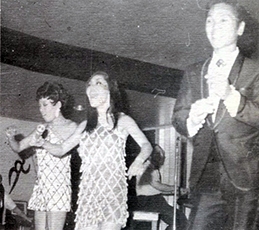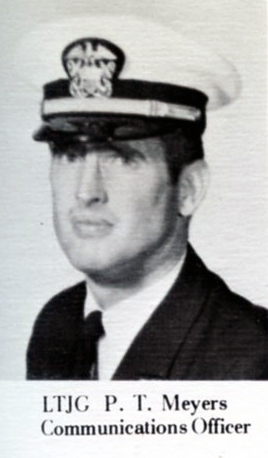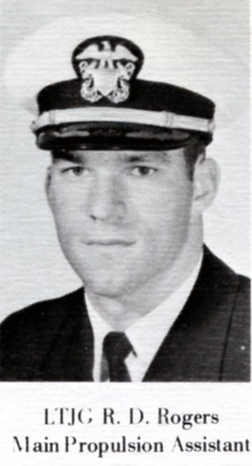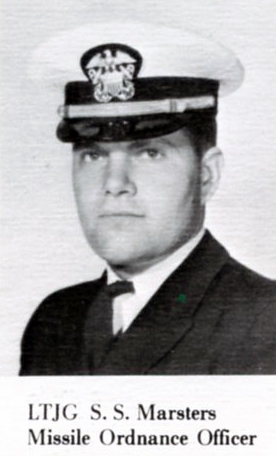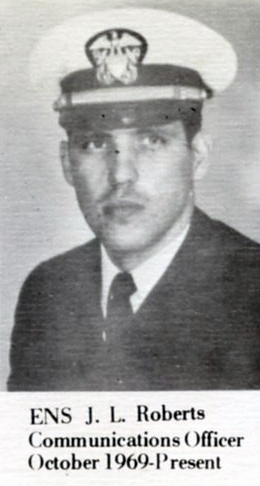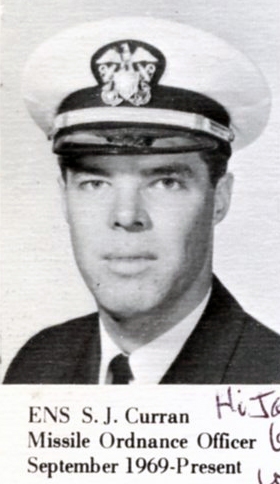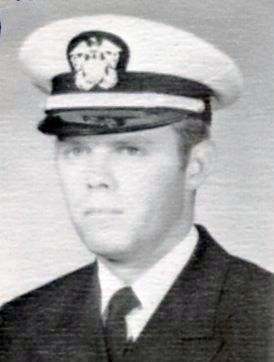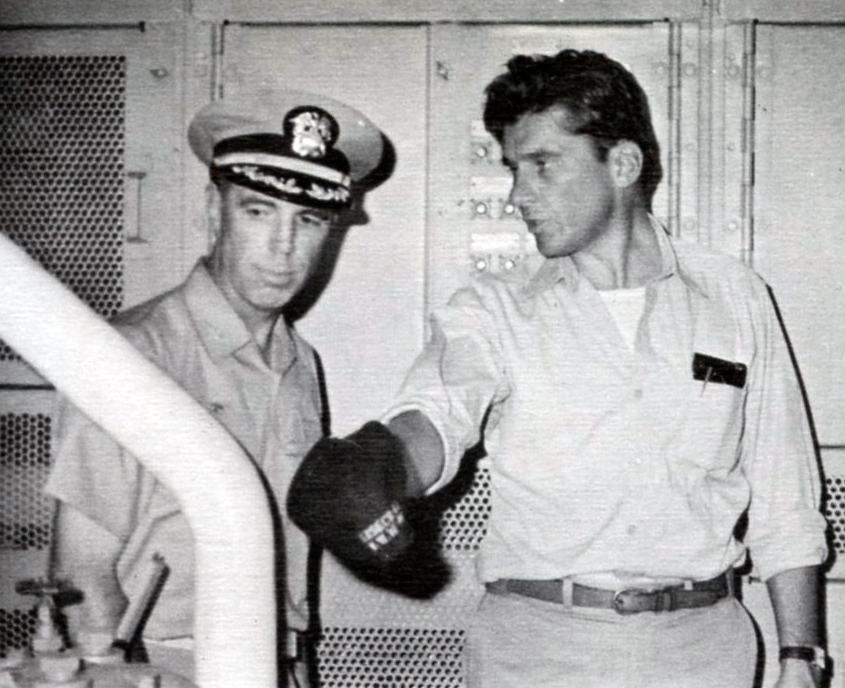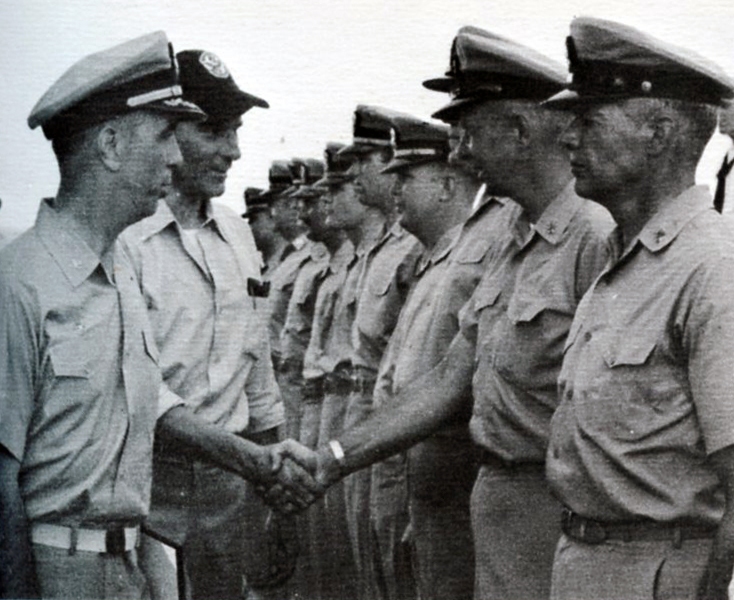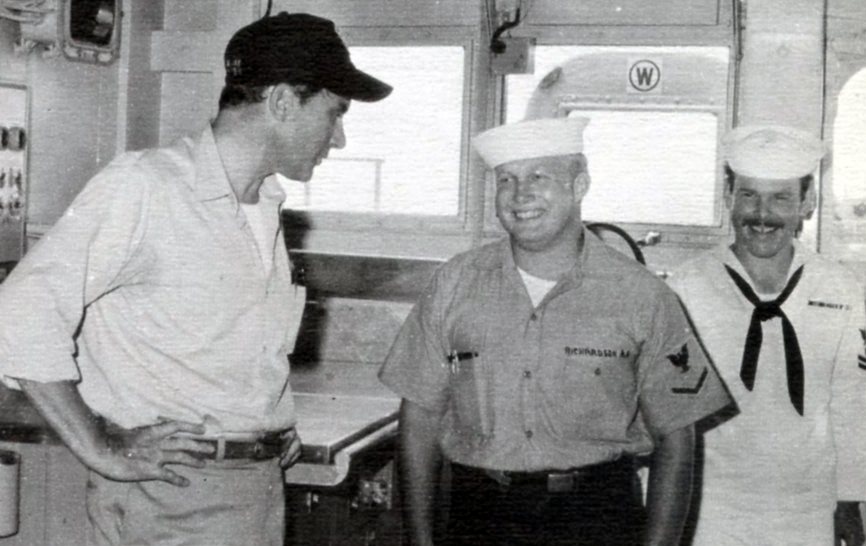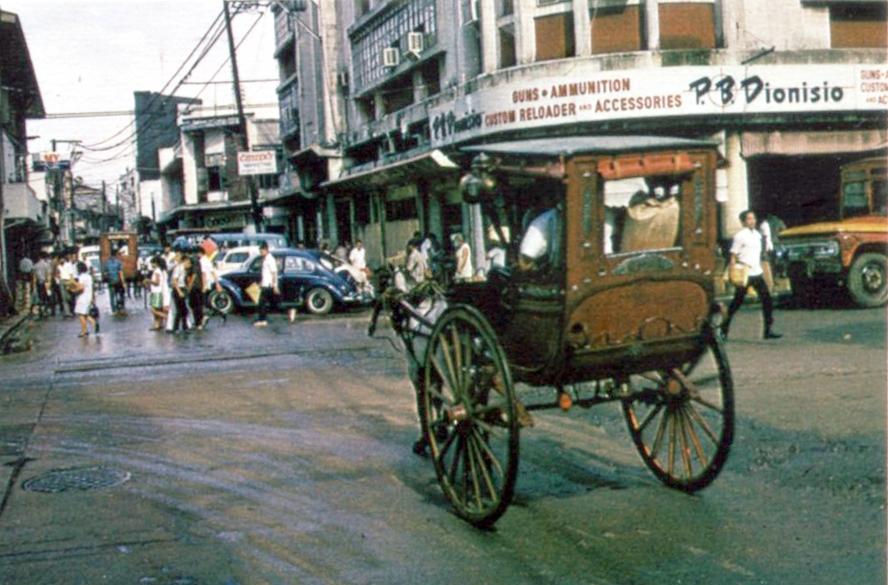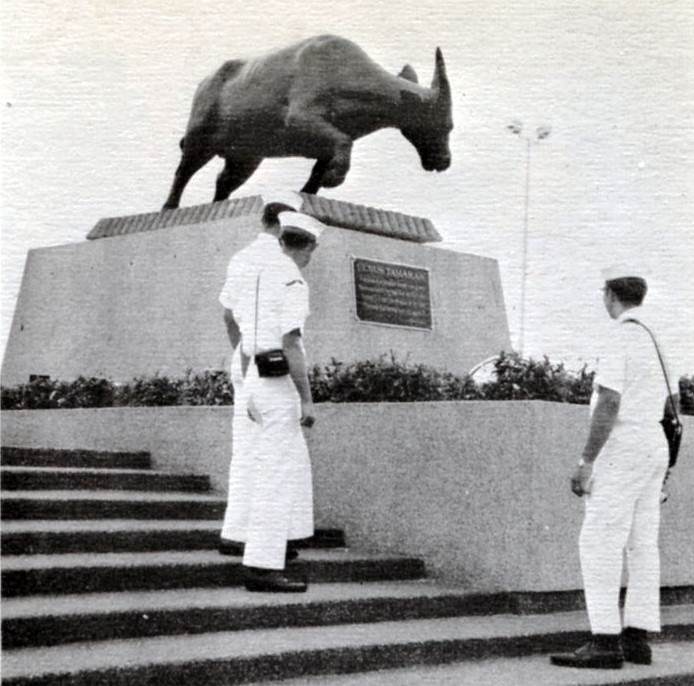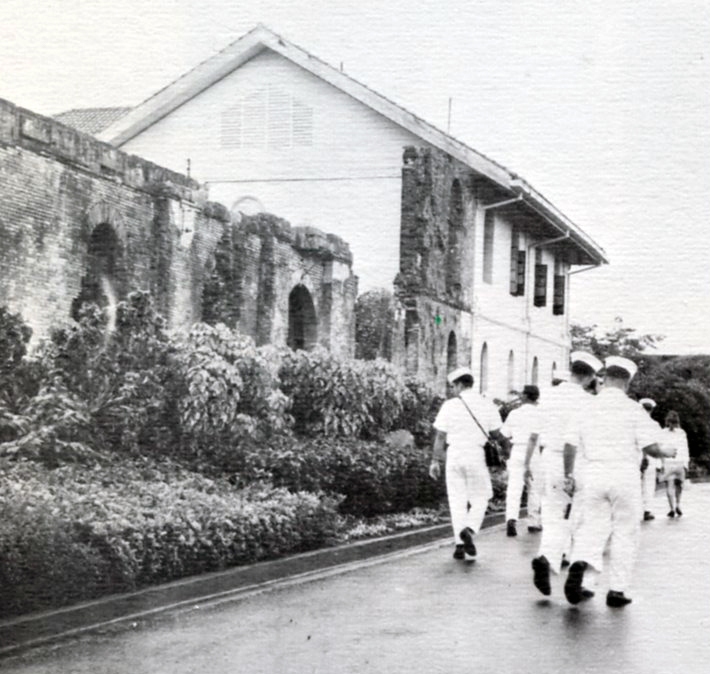
These recent days, 50 years ago, with Biddle back on the line in the Gulf of Tonkin, I spent more time than usual aboard helicopters. Biddle moved back and forth between SSAR and PIRAZ a couple of times within a few days, which meant I was on the road . . . uh . . . in the air often.
One trip was of particular note in my journal. On 9 October 1969, we lifted off at 0700, which would not normally be difficult, but I had gotten into my rack at 0230. Here’s my journal entry about the ride: “Flew to LONG BEACH. Nasty trip. We went really high — above the clouds. The pilot has a thing about clouds. We had both doors open, so a good draft, and it was bitchin’ cold. I shivered for about 15 minutes straight. While shuttling between LB and MAHAN, our helo broke a wheel spring, so it flew home, leaving me. I then flew over to the MAHAN, and rode up with her to BIDDLE, then flew home.”
My very first helo ride had been back in June, when LT Libbey and I had gone ahead to the Gulf. Taking us from USS Kearsarge to USS Chicago was Helicopter Combat Support Squadron Seven (HC-7), Detachment 110, known affectionately as the “Big Mother Truckers.”
They handed us a welcome-aboard card with information and advice in case of emergency. Their last bit of advice was: “Do not panic! This is a right reserved for the aircrew only.”
Helicopters did much more for Biddle, of course, than give the intelligence nerd rides. They brought us supplies, movies, mail. Sometimes they landed on our helo deck, sometimes they hovered and lowered materiel to the deck. Those were brief visits.
As SSAR, we carried for weeks at a time a helicopter detachment — pilots and crew members, probably also from HC-7. Their job, nearly every day, was to go to points off the coast of North Vietnam and be ready to conduct search-and-rescue missions for US pilots if needed. During our deployment, the US was not conducting bombing missions into North Vietnam, but US planes were conducting reconnaissance missions. I would receive information about the times and routes and would brief the helicopter pilots beforehand. My other interaction with at least one of the pilots, also nearly every day, was to play bridge with them after the movie. (Neither they nor I was on the watch list when Biddle was on the line. They were not ship’s crew. I was 24/7.)
Here’s a brief (1:06) video from the films taken by GMG2 George Boyles or GMG2 Jerome Kuczmarski. It shows helicopters in the various roles.
Landing and taking off from Biddle took both ship’s crew and aircrew, coordinating many elements. Here’s a gallery of photos from the cruise book showing a landing on board.
There were also celebrations. Not on every landing, though I always thought a safe landing deserved a celebration. Biddle took note of significant landings, including #300 and #600, as evident in the photos from the cruise book below.


But it was one of the last landings on board that deployment that . . . ahem . . . took the cake. On 13 November 1969, a helicopter from the USS Coral Sea (CV-43) landed after a routine flight, the purpose of which has been lost to history. I wonder if the crew was surprised at what happened on their arrival. For that landing was the 700th on Biddle since her commissioning, and 439th during this deployment, more than 150 more than in the 1968 deployment.

But was there a cake? The cruise book does not have such a photo. It was, however, the occasion for a group photo of air and ship’s crew.
Here are other cruise book photos related to helicopters.


